Most of us don’t understand the process and scope of medical research – how it’s built or how it works. When we read about research findings and developments, it can feel distant and confusing. Why does research happen so slowly? How are research topics decided? Who are the players?
While much information is available in the public domain to researchers, most of us don’t come across such information. And even if we did, it’s not very meaningful. Most people don’t have enough detailed scientific knowledge.
But I think medical research – and our health – would be better if we better understood the process and opportunities for research funding by the public and philanthropists.
Most of us understand that the National Institutes of Health (NIH) make funding investments and a variety of foundations and organizations also sponsor research.
When I started wading into this space, understanding how to improve the funding, pace and timing of research always intrigued me.
Let me try to illustrate how, where and when funding evolves in using an example uniquely American — a 100-yard football field.
I’ll begin this metaphor by noting that there are two ends – where a team begins their possession and the end where the team scores.
The “Red Zone”
The scoring end fans refer to as the “Red Zone.” This is the last 20 yards before scoring, either a touchdown or field goal. By arriving here, a team has moved down the field successfully and is close to scoring. Applying this to research, the Red Zone is the area where the drug companies play. At this point projects are relatively risk-free relative to research farther away (at the opposite end of the field). Drug companies watch and wait for research to evolve and then they jump in toward the end – with less risk and the potential for more immediate return.
From the Red Zone to the 50-yard line
Tracking backwards, there is the 20-yard line (beginning of the Red Zone”) to midfield, or the 50-yard line. The football has made it past the start and has a chance of scoring. This is the area where the majority of research dollars are invested. This is where the NIH and other foundations/organizations/philanthropists mostly play and fund.
At this point, research is less risky because it’s made it past initial efforts or “proofs of concept.” Things have been identified and perhaps proven to some extent, but it needs further honing, refining or focusing. Thus, perhaps the ROI – rate of return is believed to be present and thus the investment.
As you might guess, the research projects in this area of the field (from the 50-yard mark all the way to the goal line) are somewhat closer to the clinic and have an increased chance of having a positive impact on patients .
From the 50-yard line to the starting 20-yard line
Most football offensive drives start at the 20-yard line and there’s a lot of work and strategy involved in advancing the football. Again, thinking in terms of medical research, there are a lot of unknown projects with limited or no funding that may not advance past this area.
Often these projects, ideas, and concepts never receive direct funding unless they can be partially integrated into other project(s) because of the dedication and creativity of the researcher(s) involved. These projects are in an “unknown zone” with limited visibility to funders or other researchers. This makes it hard to analyze their contribution and processes.
Projects in this area need funding to develop a “proof of concept” and even then, they may or may not qualify for NIH or other substantial funding. The great challenge is that the cost of doing research makes getting initial money to create a “proof of concept” less likely. Why? Because it’s risky in the eyes of funding entities. They’d like to support something already driving down the field.
From the 20-yard line to the Other End of the Field
Major discoveries lie before in the space where no one thinks things start; the other end of the field. This is the risky place for a football team. Getting the ball moving from your own End Zone out to the 3- or 5-yard line is when you find fans holding their breath. When teams have to start the long drive down field.
For research, it’s the point where things may or may not work as thought. However, this is where discoveries point the way forward. Without investment at this end of the field, nothing transformative can happen. Relatively minor investments at this other end of the field can really pay off, yet projects here get very limited research funding.
For example, the NIH generally does not invest until or unless there has been a proof of concept, something that happens closer to the 50-yard line or beyond. Yet, there cannot be a proof of concept without funding this start of the long drive down the field.
Many projects here are rightly, I believe, answering basic science questions and starting without obvious connections to specific human diseases or treatments. And this, is where the JKTG Foundation likes to focus – where the why and how of discoveries lie. Our process – we select researchers that are smart and dedicated, then work with them to identify projects that need funding, and then fund those projects.
Our researchers are identifying how things work, learning why and then spreading to word of their findings through presentations, papers, publications, and collaborations. It is through dedicated researchers, interdisciplinary work, coordination, and collaborations that we seek for all to learn and grow.
Let me share another metaphor on why supporting this early research is so fundamentally important. If you’re going from Richmond, VA to San Francisco, CA in the most direct way. You know it’s west, but if you begin the journey and are one degree off, you’ll be completely off the mark by the time you get to the other coast.
If we understand more at an earlier point, we increase the likelihood of effectively and efficiently getting to the goal line. The same is true with the development of effective cancer treatment(s). If we know how things work earlier, then we will be more effective as we move down the field and when we get to the other end – the patients. It affects our strategy progressively.
If there was more funding and support at this “other end of the field,” I believe we could more quickly answer cancer questions we’ve long been asking and accelerate the rate of discoveries. More organizations need to focus on and invest in research at this end of the field. To accomplish more, sooner we must change the approach.
Featured news
Ted’s Take: Errors in formulas and what it means for AI
Spinach is the best source of iron. I’ve understood this for decades now. As I ate more and more healthy foods, I’d choose spinach salads because of the “great” nutritional value, particularly iron.
Ted’s Take: An ounce of prevention
They stay an ounce of the prevention is worth a pound of cure. Isn’t it the truth.
How physicians are paid
Despite a growing need for general practitioners, the Medicare system is not helping with this shortage given the maldistribution of reimbursement between general medical providers and surgeons and other specialists.

Jayne Koskinas Ted Giovanis
Foundation for Health and Policy
PO Box 130
Highland, Maryland 20777
Media contact: 202.548.0133


